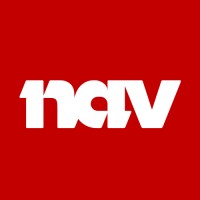
Nav
Nav er en viktig del av sikkerhetsnettet i velferdsstaten. Vi skal bidra til at flere kommer i arbeid og færre går på stønad, og samtidig sørge for at de som trenger det er sikra inntekt og økonomisk trygghet gjennom rett pengestøtte til rett tid. For å løse dette samfunnsoppdraget forvalter Nav om lag en tredel av statsbudsjettet, gjennom ordninger som arbeidsrettede tiltak, dagpenger, arbeidsavklaringspenger, sykepenger, pensjon, økonomisk sosialhjelp, foreldrepenger, barnetrygd og kontantstøtte. Nav tilbyr tjenester, ytelser og stønader til både privatpersoner og arbeidsgivere. For å sikre helhetlige tjenester, samarbeider vi tett med arbeidslivet, kommune-, helse- og utdanningssektoren, andre statlige virksomheter og frivillige aktører.






